Conservatories are an excellent addition to any property and offer a great way to open up existing rooms and bring more natural light into the home. Not only that, but they’re particularly useful when it comes to enjoying the outdoor vibe here in the UK as you can always pop back inside when the Great British Summertime returns to form and the heavens open!
If you’ve already chosen your conservatory, you may be wondering what the best type of flooring is to use. Happily, the options are nearly limitless. However, as an area that gets more than its share of foot traffic from the outdoors and will experience some extremes in temperature, you will want to consider something that’s both practical and hard-wearing.
Thankfully there are plenty of floor tiles that are just that – perfect for indoor:outdoor usage. Read on to find out which tiles work best for conservatories and what you should consider before installing tiles.

Choosing Your Tiles
Conservatory floors are subjected to a lot of traffic, especially if they back onto a garden area as they’re used as an entry and exit point (particularly during the summer months when there’s all that alfresco entertaining to be done!). Taking this into consideration, it’s wise to opt for hardwearing porcelain tiles that will stand up to wear and tear.
These days, porcelain tiles come in all manner of shapes, sizes and designs, but wood effect floor tiles, patterned tiles, and slab tiles seem to be particularly popular for conservatories.
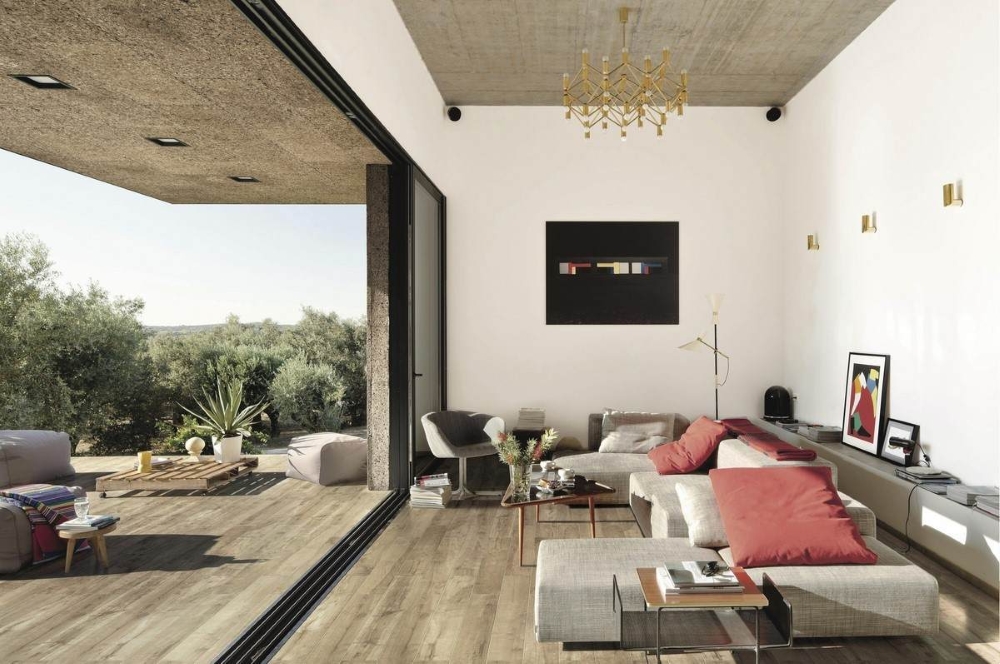
Wood Effect Tiles
A great choice for those looking to bring a natural look to their interiors, wood effect tiles feature all the aesthetics of genuine timber floors but with none of the upkeep and maintenance required of the real thing. Resistant to staining and scratching and available in all manner of styles and designs – check out the weathered effect of Driftwood, parquet floor replicating Kanna, and rustic plank reproduction offered by Kauri. Unlike real wood, you don’t have to continually seal, polish or wax these bad boys either. Winner.

Patterned Tiles
Who says conservatories have to be conservative, eh? Not us that’s for sure – just take a look at our massive selection of eye-catching patterned floor tiles! Creating a funky floor for your glass-walled chillout haven has never been easier due to the raft of patterned tile options available. If you fancy a Medditeranean vibe then take a look at the likes of Andalucia and Hanoi, whereas if 1920s style Art-Deco aesthetics are more to your liking then you can’t go wrong with encaustic-style tiles like Briana, Swing, and Lester. Take a look at one of our customer’s finished project for inspo.
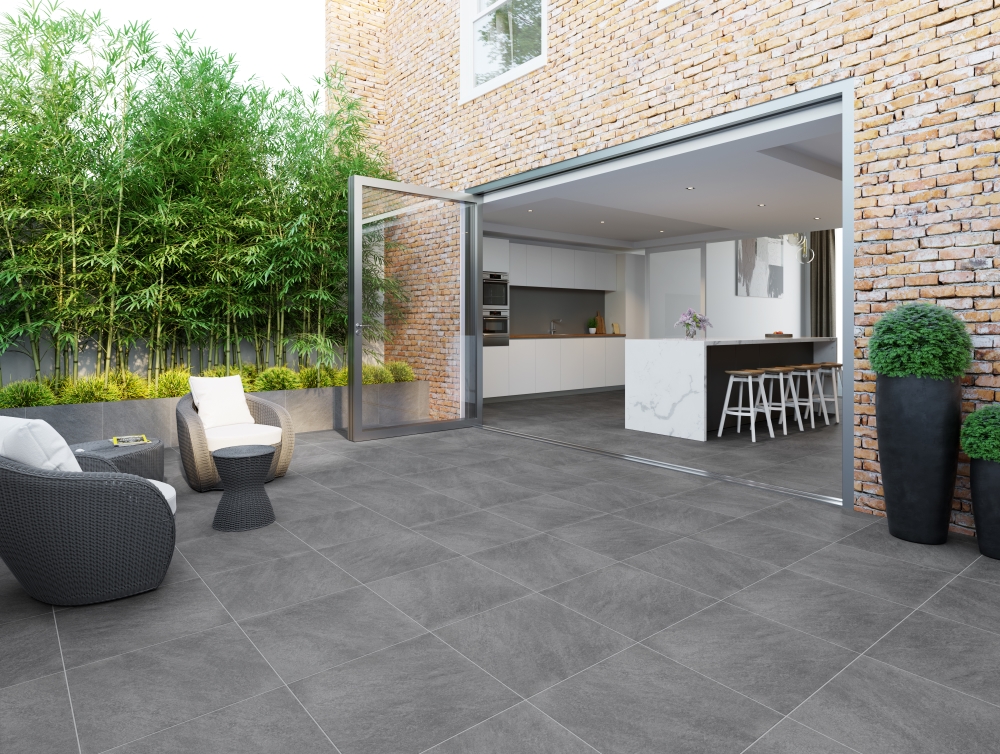
Slab Tiles
These things have been setting quite a few tongues wagging of late, mainly due to their versatility when it comes to creating a seamless look from indoor to outdoor areas. Commonly referred to in the exciting world of interior design as indoor:outdoor (that colon makes all the difference!), slab tiles are basically a porcelain version of your ‘traditional’ outdoor paving slabs, only they’re 20mm thick, aren’t porous like some concrete and natural stone is, and don’t require any upkeep other than a swift rinsing down every now and again. Whilst you wouldn’t necessarily use these for a conservatory floor, many tiles do have accompanying 20mm thick versions that you can use to extend a flooring aesthetic from interior areas to exteriors. Check out our Portico page for the full lowdown on slab tiles.
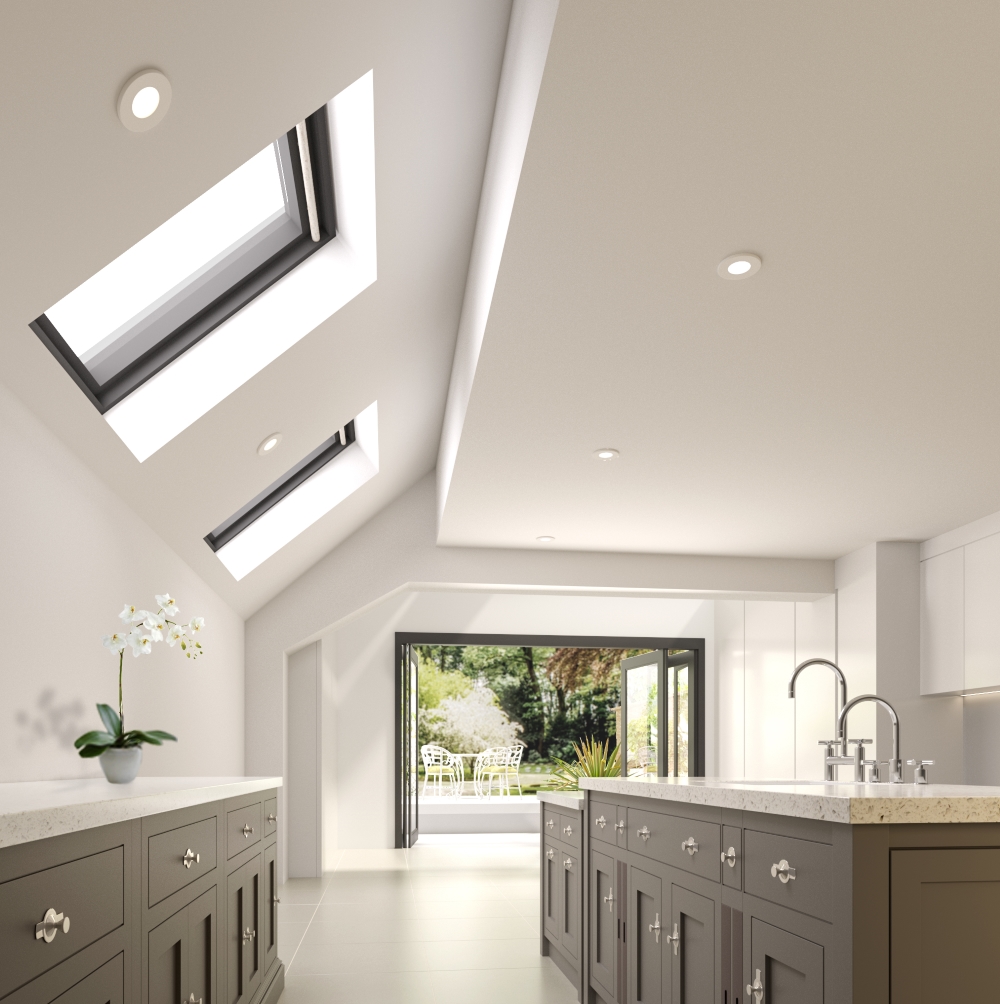
Things To Consider Before Laying Your Tiles
The most important thing to remember when laying any sort of floor tile is to ‘concentrate on the substrate’ as it’s the substrate that dictates the type of grout, adhesive and sometimes even the type of tile you can use. More on this later though.
Secondly, you’ll want to avoid Quartz tiles and most types of natural stone (especially granite!) as this type of material is susceptible to UV damage and fading from continued exposure to sunlight. In fact, most natural stone products will require post-installation sealing and continued upkeep throughout the life of the tiles, so best to avoid if you don’t want to shell out on stone sealers every few years!
It’s also worth remembering that the UK is pretty damp and cold for 8 months of the year (as if you could forget!), so investing in underfloor heating to sit under your tiles and keep your floor toasty warm during the colder months is never a bad idea. We recommend opting for an underfloor heating kit with a minimum power of 200 kilowatts along with insulation boards which keep heat rising to ensure your space stays nice and cosy year round.
Finally, as it’s common as it’s common to tile from a kitchen into a conservatory, pay attention to your sub-floors. If you have two different sub-floors, you’ll want to ensure you use expansion joints and anti-fracture membranes to make that transition between floors seamless and stable.
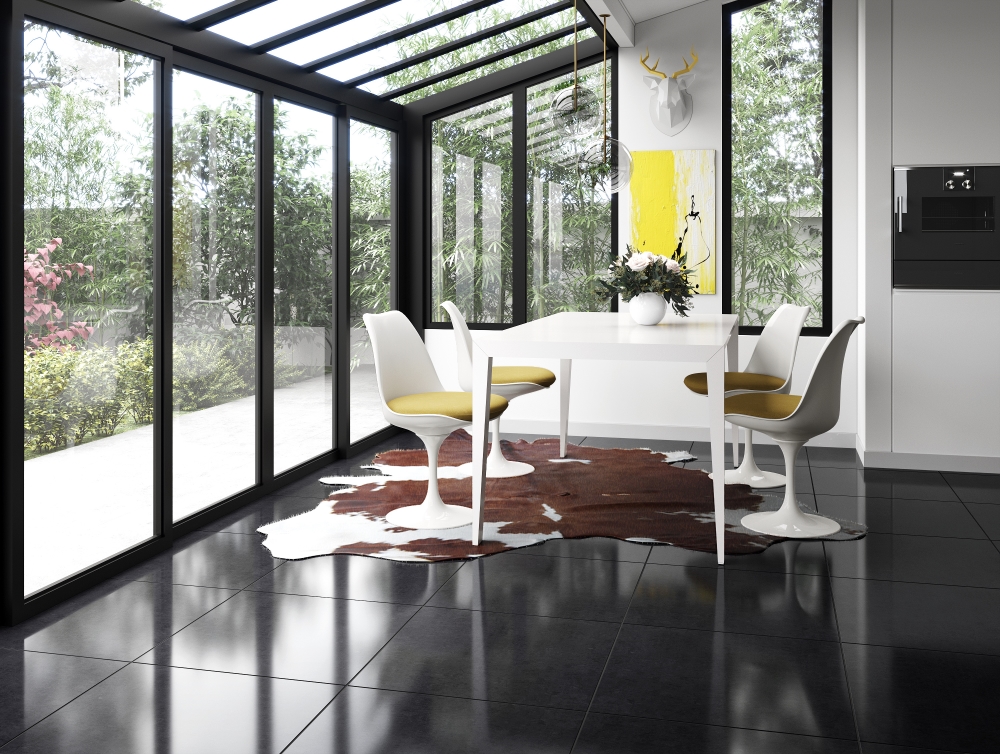
Grout & Adhesive
No matter which type of conservatory tiles you’ve chosen, you’re going to want to ensure that they’re attached good and proper and that using the right grout and adhesive. As previously mentioned, it’s the substrate (that’s the surface you’re tiling onto) that mainly dictates the type of adhesive and grout you should plump for.
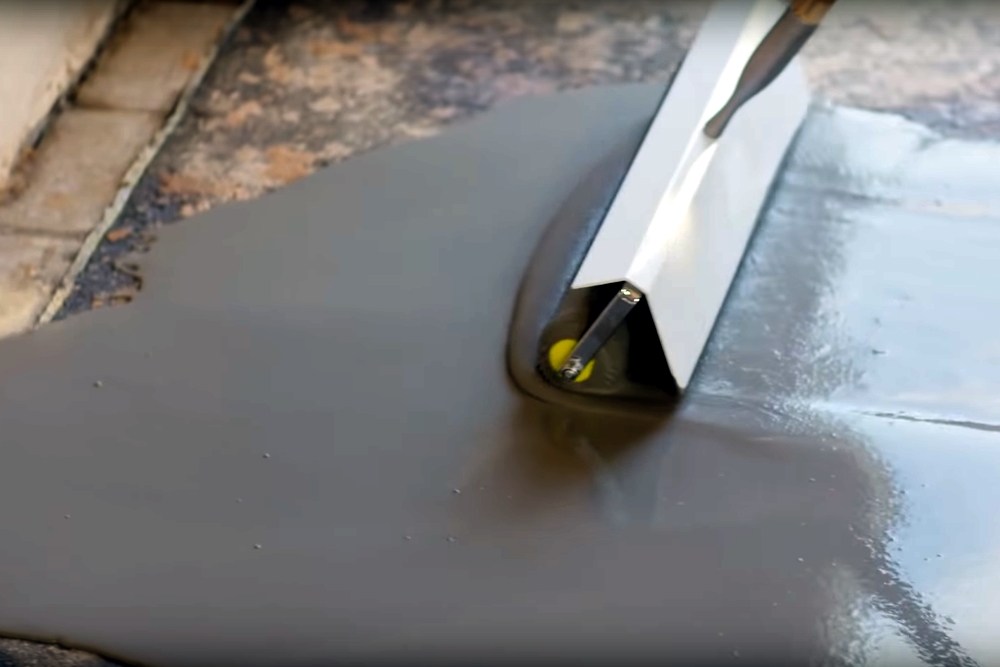
Concrete Substrate
The most common substrate used in conservatories is concrete, mainly due to the fact that conservatories are often built at a later date as an extension to a property and so don’t use existing floorspace. When preparing a concrete floor for tiling you should ensure that it’s totally free from dust and debris and is completely level.
You can do this by giving it a good sweep and then applying Mapei Ultraplan Levelling Compound and then consolidating with Mapei Primer G. Watch this video in which our man Craig Phillips shows you how to do just that. After that, you want to use a flexible adhesive and grout that will withstand temperature variance – we recommend Mapei Keraquick Fast-Setting Adhesive and Mapei Ultracolor Flexible Grout.

Wood Substrate
Whilst not especially common, it’s not beyond the realms of possibility that a conservatory sub-floor is constructed from wood. If it is then you’ll want to take a slightly different approach on preparing it for tiling. As with concrete substrate, you’ll need to ensure the area to be tiled is free from debris and dust but there’s no need to treat with a levelling compound. However, it’s never a bad idea to lay some backer boards down on top of an existing wooden floor to ensure that it’s both level and to prevent liquid egress – check out our Backer Board range for more info.
When it comes to grout and adhesive, it’s pretty much the same drill as when installing onto concrete – Mapei Keraquick Fast-Setting Adhesive and Mapei Ultracolor Flexible Grout. However, when installing on solid and timber substrates Mapei Keraquick adhesive must be mixed with Mapei Latex Plus. This is to ensure flexibility as wooden or cement board substrates will still be subject to a degree of movement even once the tiles have been installed. For the full lowdown on grouts and adhesives, take a look at our Mapei Grout Quick Guide and Mapei Adhesive Quick Guide articles.
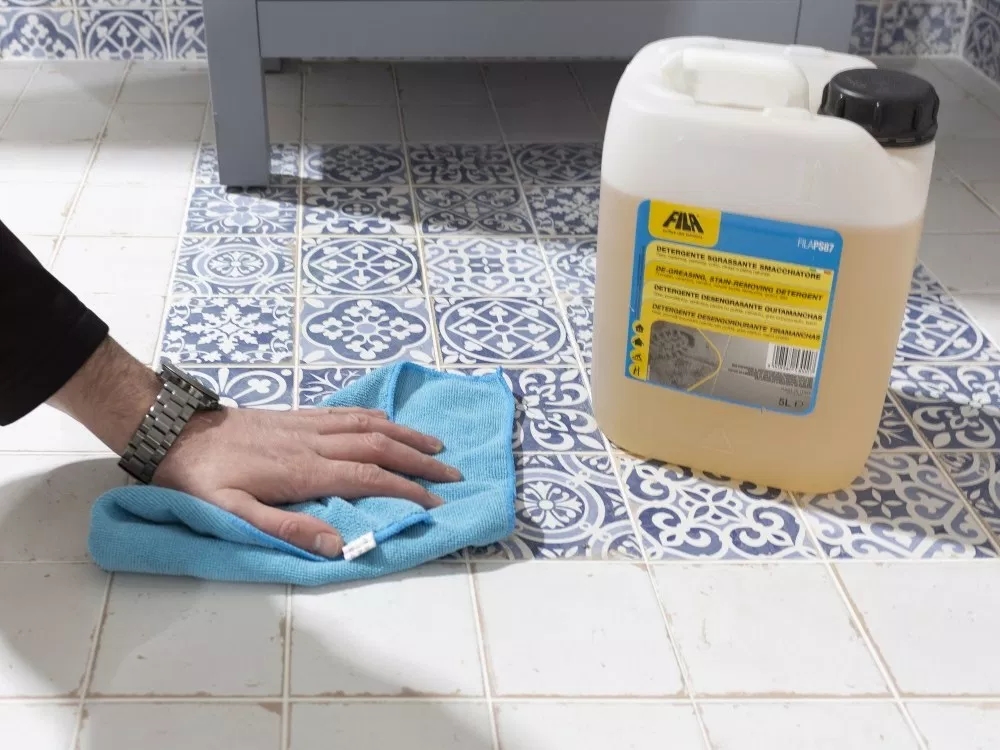
How To Clean Conservatory Tiles
So you’ve installed your conservatory floor tiles and have been enjoying your newly created space with every spare moment you have, but those floor have gotten a little grubby – how best to clean them you ask? We’ll, most porcelain floor tiles can be spruced up with just a bit of hot water and a mop, or if you’re feeling particularly hi-tech, a steam mop. It’s advisable to avoid using brushes with stiff bristles as they can damage the surface layer or glaze of a tile.
Continued use of corrosive chemical cleaners that contain ammonia, bleach and/or acids can also erode the surface layer of tiles, meaning that water absorption rates can increase. Similarly, corrosive chemicals can damage grout, leading to water ingress which will loosen the tiles, so avoid at all costs! If you need to shift really stubborn stains without harming your lovely tiles of course then we recommend using a specialist porcelain tile cleaner such as Filacleaner Tile & Stone Cleaner from leading tile cleaning solution manufacturer, Fila. Check out our Spring Clean: How To Clean Tiles Correctly feature for further information about cleaning different types of tiles.
If you’ve got any questions about choosing and installing conservatory tiles, take a look at our Help Centre section or give our friendly customer services team a call on 01782 223822 and they will be happy to advise.
You might also enjoy these posts on the Tile Mountain blog…
Eye-Popping Feature Floors To Create a Fantastic Focal Point
Here at Tile Mountain, we not only have a huge range of tiles to suit every purpose, we also have a wealth of tiling knowledge gained from over 30 years in the tile industry, (which we’ll do or best to share with you across these very pages).
Whether you’re looking for the perfect tiles for your next home improvement project, are searching for some style inspiration, or simply need a bit of help and advice, you’re in the right place.

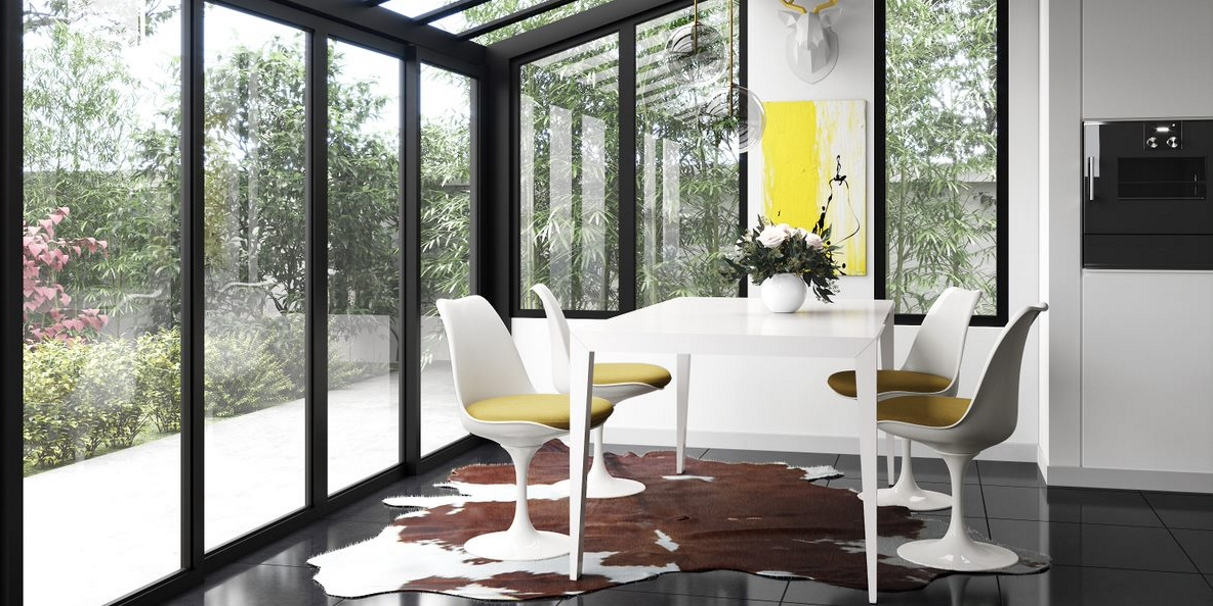
[…] How to Choose Tiles for Your Conservatory (Tile Mountain) […]